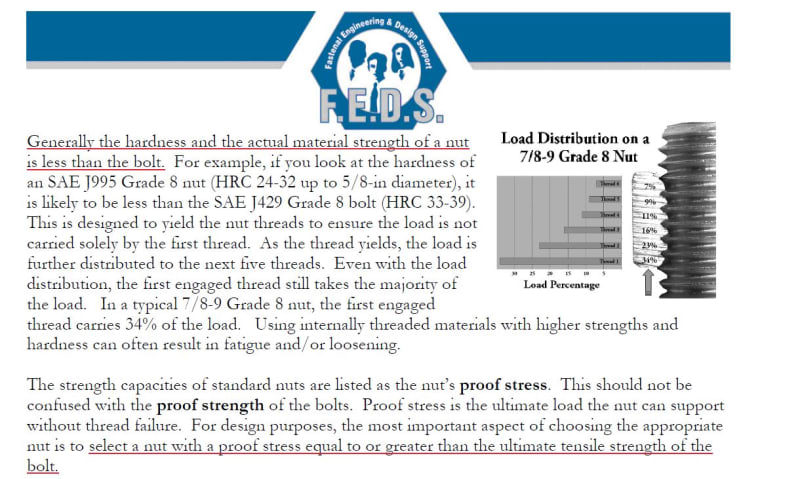Hello everyone,
I have to design a custom nut for my assembly for some reasons - I have a limited place and an exotic material.
As a result I have to make sure that the nut I design will not fail under the predicted loads.
Until now picking up a nut was quite a simple task (as long as you pick a standard hex nut) but now I have 2 simple questions that I couldn't find any data.
1. What possible failure modes a nut can undergo?
Everything I encountered on the web talked about the thread shear, but I couldn't find any reference to a failure due to tensile.
If we take the bolt as an example - there are 2 things that are checked:
Thread strength (due to shear strength) and shank strength (due to tensile strength).
Why there is no such treatment for the nut? I think that if its external diameter would be too small it may fail in tension as well...no?
2. How can I calculate the nut strength?
In shear - how many tooth are considered as participating in resisting the tensile force?
In tension - which area is taken? all the area over the tooth?
thank you all
I have to design a custom nut for my assembly for some reasons - I have a limited place and an exotic material.
As a result I have to make sure that the nut I design will not fail under the predicted loads.
Until now picking up a nut was quite a simple task (as long as you pick a standard hex nut) but now I have 2 simple questions that I couldn't find any data.
1. What possible failure modes a nut can undergo?
Everything I encountered on the web talked about the thread shear, but I couldn't find any reference to a failure due to tensile.
If we take the bolt as an example - there are 2 things that are checked:
Thread strength (due to shear strength) and shank strength (due to tensile strength).
Why there is no such treatment for the nut? I think that if its external diameter would be too small it may fail in tension as well...no?
2. How can I calculate the nut strength?
In shear - how many tooth are considered as participating in resisting the tensile force?
In tension - which area is taken? all the area over the tooth?
thank you all

